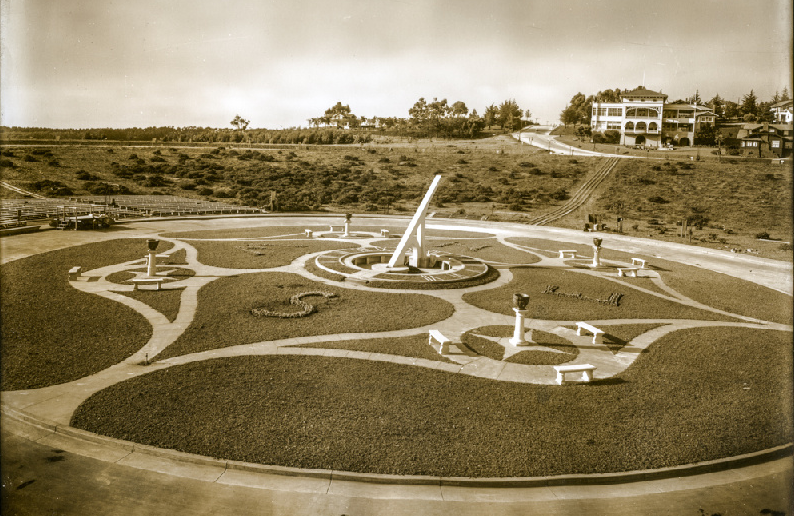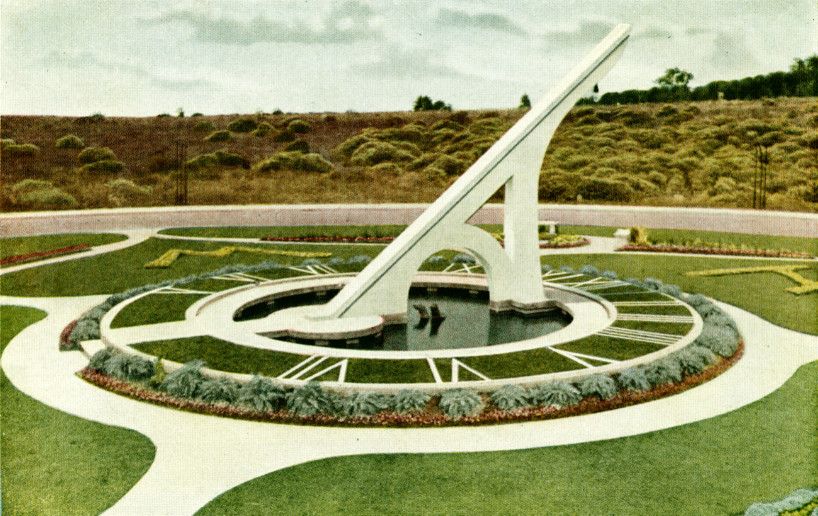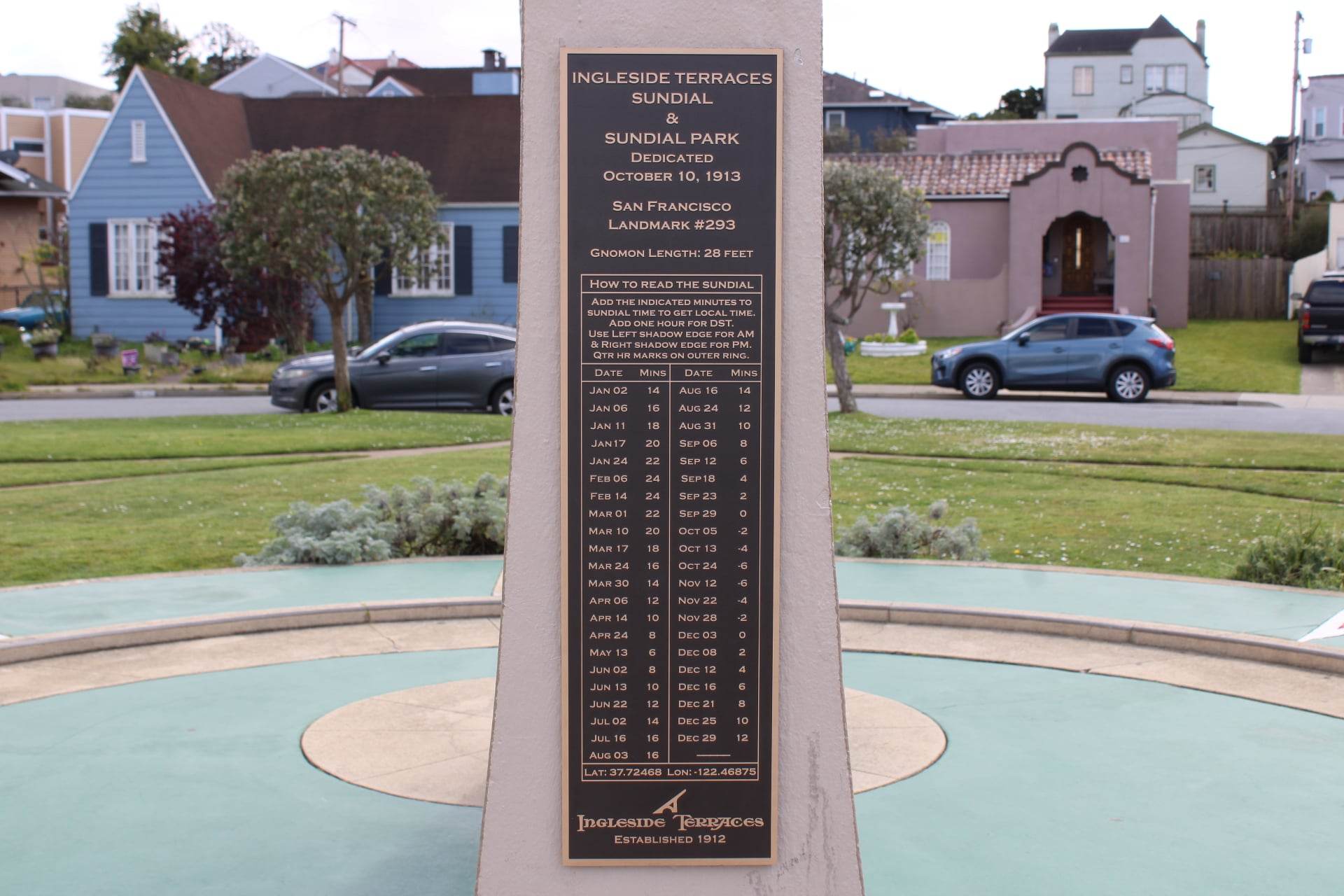Balboa Park Skatepark Makeover And More
In this week’s newsletter, we cover proposals to improve Balboa Park and more.
The city’s famous fog is no obstacle to using the neighborhood’s historic timekeeper.

Everyone knows Ingleside’s huge sundial. Yet few people know how to use it to tell time.
The historic landmark rests in a pocket park on Entrada Court in the Ingleside Terraces residence park. It’s surrounded by four Greco-Roman columns representing Doric, Ionic, Corinthian and Tuscan classical orders positioned in the ordinal directions.
During the height of the pandemic, longtime Ingleside Terrace residents Robert and Carolyn Karis figured out how to use the sundial with a booklet about the neighborhood from 1914 and some online sleuthing.


“You actually can read it,” Robert said. “It’s about as accurate as an old wind-up wristwatch.”
Carolyn shared that the sundial points north and the four distinct petal-shaped walkways on the surrounding lawn once had the letters N, S, E and W markings.
Reading the sundial takes a little bit of brain power, requiring concentration on the shadow the gnomon casts on its face while doing addition and subtraction.
Here’s how to use the Ingleside Terraces sundial.

First, determine the direction the shadow is laying on the face. If the shadow is toward the left side of the gnomon, it’s the morning and if it’s toward the right, then it’s the afternoon.
Thin lines in the concrete on the face mark time.
The longest line located along the Roman numerals represents the hour. The short lines located below the green strip and are in between each hour represent 30-minute intervals, and the short lines located above represent 15-minute intervals.

The metal plaque on the sundial denotes its landmark number along with a customized Sundial Equation of Time Chart.
Robert Karis used National Oceanic Atmospheric Administration's data to establish the sundial’s chart. It has two-minute intervals to guide readers down to the nearest minute when converting from sundial time to clock time. (The Ingleside Terraces Homeowners Association independently verified the information for the plaque.)
The conversion rules, which can also be found on Karis’ website, are as follows: add or subtract the amount of time displayed on the chart that corresponds with the date and if it’s during daylight savings, add one additional hour.

There is also an additional secret rule the Karises shared, which is to correct to the middle of the sun, add one minute in the morning or subtract one minute during the afternoon.
“It has to do with nature,” Robert Karis said. “The way the earth circles the Sun and the way the Earth is tilted from the Sun. There are all sorts of math.”
For example, if the sundial reads roughly 1 p.m. on March 30, one hour would be added due to daylight savings and 14 minutes would also be added due to the chart. Since it was observed during the afternoon, one minute would be subtracted, making the local clock time 2:13 p.m.
If it’s observed on a day not listed on the chart, there’s a more subjective way to figure that time out by looking for the in between minute value.
For example, if it’s March 27 one could estimate that it’s the halfway point between March 24 and March 30 on the chart resulting in the addition of 15 minutes to the time since it’s between 16 minutes and 14 minutes. If it were a date like March 25, it may be best to add 16 minutes since it’s closer to March 24 or if it were March 28, 15 minutes could be added since it’s closer to March 27.
This story you’ve just finished was funded by our readers. We want it to inspire you to either sign up to become a member, give a gift membership or make a gift contribution to The Ingleside Light so that we can continue publishing stories like this one that matter to our community and city.
The Ingleside Light is a reader-funded news publication that produces independent journalism to benefit the community. We were founded in 2008 to fill a void in San Francisco’s press: An outlet dedicated to the people of the greater Ingleside neighborhood. More than a decade later, The Ingleside Light is still here doing the work because it is critical to democracy and our civic life.
Your contribution today will help ensure that our critical work continues. From development to small business, to parks and transportation and much more, we are busier than ever covering stories you won’t see anywhere else. Make your gift of any amount today and join the hundreds of readers just like you standing up for the power of independent news. Thank you.
We’ll send you our must-read newsletter featuring top news, events and more each Thursday.